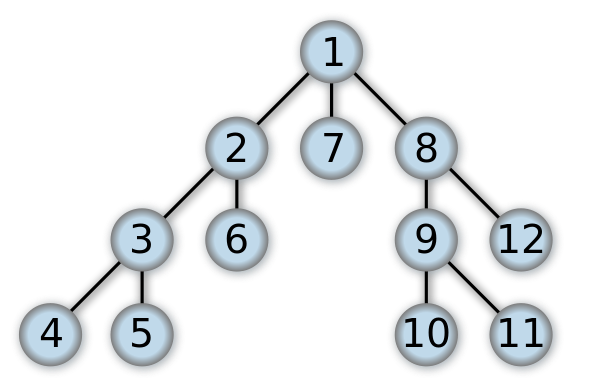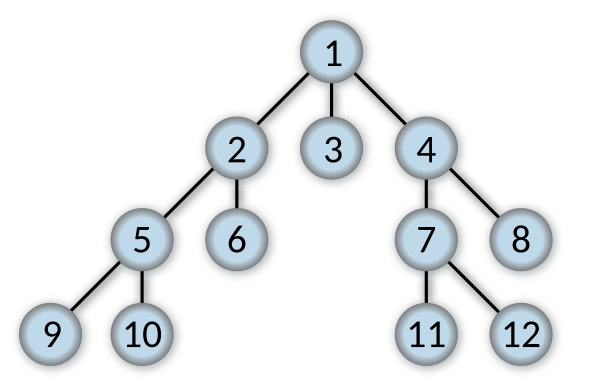- Introduction
-
1.
Getting Started
- 1.1. Multi-Model Database
- 1.2. Installation
- 1.3. Run the server
- 1.4. Run the console
- 1.5. Classes
- 1.6. Clusters
- 1.7. Record ID
- 1.8. SQL
- 1.9. Relationships
- 1.10. Working with Graphs
- 1.11. Using Schema with Graphs
- 1.12. Setup a Distributed Database
- 1.13. Working with Distributed Graphs
- 1.14. Java API
- 1.15. More on Tutorials
- 2. Basic Concepts
- 3. Fetching Strategies
- 4. Indexes
- 5. Security
- 6. Caching
- 7. Functions
- 8. Transaction
- 9. Hook - Triggers
-
10.
API
- 10.1. Graph or Document API?
-
10.2.
SQL
- 10.2.1. Filtering
- 10.2.2. Functions
- 10.2.3. Methods
- 10.2.4. Batch
- 10.2.5. Pagination
- 10.2.6. Sequences and auto increment
-
10.2.7.
Commands
- 10.2.7.1. Select
- 10.2.7.2. Insert
- 10.2.7.3. Update
- 10.2.7.4. Delete
- 10.2.7.5. Alter Class
- 10.2.7.6. Alter Cluster
- 10.2.7.7. Alter Database
- 10.2.7.8. Alter Property
- 10.2.7.9. Create Class
- 10.2.7.10. Create Cluster
- 10.2.7.11. Create Edge
- 10.2.7.12. Create Function
- 10.2.7.13. Create Index
- 10.2.7.14. Create Link
- 10.2.7.15. Create Property
- 10.2.7.16. Create Vertex
- 10.2.7.17. Move Vertex
- 10.2.7.18. Delete Edge
- 10.2.7.19. Delete Vertex
- 10.2.7.20. Drop Class
- 10.2.7.21. Drop Cluster
- 10.2.7.22. Drop Index
- 10.2.7.23. Drop Property
- 10.2.7.24. Explain
- 10.2.7.25. Find References
- 10.2.7.26. Grant
- 10.2.7.27. Rebuild Index
- 10.2.7.28. Revoke
- 10.2.7.29. Traverse
- 10.2.7.30. Truncate Class
- 10.2.7.31. Truncate Cluster
- 10.2.7.32. Trucate Record
- 10.3. Java API
- 10.4. Gremlin API
- 10.5. Javascript
- 10.6. Scala API
- 10.7. HTTP API
- 10.8. Binary Protocol
- 11. Use Cases
- 12. Server
- 13. Studio
-
14.
Console
- 14.1. Backup
- 14.2. Begin
- 14.3. Browse Class
- 14.4. Browse Cluster
- 14.5. Classes
- 14.6. Clusters
- 14.7. Commit
- 14.8. Config
- 14.9. Config Get
- 14.10. Config Set
- 14.11. Connect
- 14.12. Create Cluster
- 14.13. Create Database
- 14.14. Create Index
- 14.15. Create Link
- 14.16. Create Property
- 14.17. Declare Intent
- 14.18. Delete
- 14.19. Dictionary Get
- 14.20. Dictionary Keys
- 14.21. Dictionary Put
- 14.22. Dictionary Remove
- 14.23. Disconnect
- 14.24. Display Record
- 14.25. Drop Cluster
- 14.26. Drop Database
- 14.27. Export
- 14.28. Export Record
- 14.29. Freeze DB
- 14.30. Get
- 14.31. Grant
- 14.32. Import
- 14.33. Info
- 14.34. Info Class
- 14.35. Insert
- 14.36. Load Record
- 14.37. Profiler
- 14.38. Properties
- 14.39. Release DB
- 14.40. Reload Record
- 14.41. Restore
- 14.42. Revoke
- 14.43. Rollback
- 14.44. Set
- 15. Operations
- 16. Enterprise Edition
- 17. Troubleshooting
- 18. Available Plugins
- 19. Upgrade
- 20. Internals
- 21. Contribute to OrientDB
- 22. Get in touch
- Published using GitBook
Traverse
OrientDB is a graph database. This means that the focal point is on relationships (links) and how are managed. The standard SQL language is not enough to work with tree or graphs because it hasn't the concept of recursion. This is the reason why OrientDB provide a new command to traverse trees and graphs: TRAVERSE. Traversing is the operation that cross relationships between records (documents, vertexes, nodes, etc). This operation is much much faster than executing a JOIN in a Relational database.
The main concepts of Traversal are:
- target, as the starting point where to traverse records. Can be:
- fields, the fields to traverse. Use
*,any()orall()to traverse all the fields of a document - limit, the maximum number of records to retrieve
- predicate, as the predicate to execute against each document traversed. If the predicate returns true, then the document is returned, otherwise is skipped
- strategy, as the way the traverse go in deep:
- DEPTH_FIRST, the default,
- BREADTH_FIRST,
Traversing strategies
DEPTH_FIRST strategy
This is the default strategy used by OrientDB traversal. It explores as far as possible along each branch before backtracking. It's implemented using recursion. To know more look at Depth-First algorithm. Below the ordered steps executed while traversing the graph using BREADTH_FIRST strategy:

BREADTH_FIRST strategy
It inspects all the neighboring nodes, then for each of those neighbor nodes in turn, it inspects their neighbor nodes which were unvisited, and so on. Compare BREADTH_FIRST with the equivalent, but more memory-efficient Iterative deepening DEPTH_FIRST search and contrast with DEPTH_FIRST search. To know more look at Breadth-First algorithm. Below the ordered steps executed while traversing the graph using Depth-First strategy:

Context variables
During traversing some context variables are managed and can be used by the traverse condition:
- $depth, as an integer that contain the depth level of nesting in traversal. First level is 0
- $path, as a string representation of the current position as the sum of traversed nodes
- $stack, as the stack current node traversed
- $history, as the entire collection of visited nodes
Below how to traverse using different approaches.
SQL Traverse
The simpler available way to execute a traversal is using the SQL Traverse command. Example to retrieve all the records connected from and to Movie records up to the 5th level of depth:
for (OIdentifiable id : new OSQLSynchQuery<ODocument>("traverse in, out from Movie while $depth <= 5")) {
System.out.println(id);
}
Look at the command syntax for more information.
Native Fluent API
Native API supports fluent execution guaranteeing compact and readable syntax. The main class is OTraverse:
target(<iter:Iterable<OIdentifiable>>), to specify the target as any iterable object like collections or arrays of OIdentifiable objects.target(<iter:Iterator<OIdentifiable>>), to specify the target as any iterator object. To specify a class usedatabase.browseClass(<class-name>).iterator()target(<record:OIdentifiable>, <record:OIdentifiable>, ... ), to specify the target as a var ars of OIterable objectsfield(<field-name:string>), to specify the document's field to traverse. To add multiple field call this method in chain. Example:.field("in").field("out")fields(<field-name:string>, <field-name:string>, ...), to specify multiple fields in one call passing a var args of Stringsfields(Collection<field-name:string>), to specify multiple fields in one call passing a collection of Stringlimit(<max:int>), as the maximum number of record returnedpredicate(<predicate:OCommandPredicate>), to specify a predicate to execute against each traversed record. If the predicate returns true, then the record is returned as result, otherwise false. it's common to create an anonymous class specifying the predicate at the flypredicate(<predicate:OSQLPredicate>), to specify the predicate using the SQL syntax.
In the traverse command context iContext you can read/put any variable. Traverse command updates these variables:
- depth, as the current depth of nesting
- path, as the string representation of the current path. You can also display it. Example:
select $path from (traverse * from V) - stack, as the List of operation in the stack. Use it to access to the history of the traversal. It's a
List<OTraverseAbstractProcess<?>>where process implementations are:OTraverseRecordSetProcess, usually the first one it's the base target of traverseOTraverseRecordProcess, represent a traversed recordOTraverseFieldProcess, represent a traversal through a record's fieldOTraverseMultiValueProcess, use on fields that are multivalue: arrays, collections and maps
- history, as the set of records traversed as a
Set<ORID>.
Example using an anonymous OCommandPredicate as predicate
for (OIdentifiable id : new OTraverse()
.field("in").field("out")
.target( database.browseClass("Movie").iterator() )
.predicate(new OCommandPredicate() {
public boolean evaluate(ORecord<?> iRecord, OCommandContext iContext) {
return ((Integer) iContext.getVariable("depth")) <= 5;
}
})) {
System.out.println(id);
}
Example using the OSQLPredicate as predicate
for (OIdentifiable id : new OTraverse()
.field("in").field("out")
.target(database.browseClass("Movie").iterator())
.predicate( new OSQLPredicate("$depth <= 5"))) {
System.out.println(id);
}
Other examples
OTraverse gets any Iterable, Iterator and Single/Multi OIdentifiable. There's also the limit() clause. To specify multiple fields use fields(). Full example:
for (OIdentifiable id : new OTraverse()
.target(new ORecordId("#6:0"), new ORecordId("#6:1"))
.fields("out", "int")
.limit(100)
.predicate( new OSQLPredicate("$depth <= 10"))) {
System.out.println( id);
}